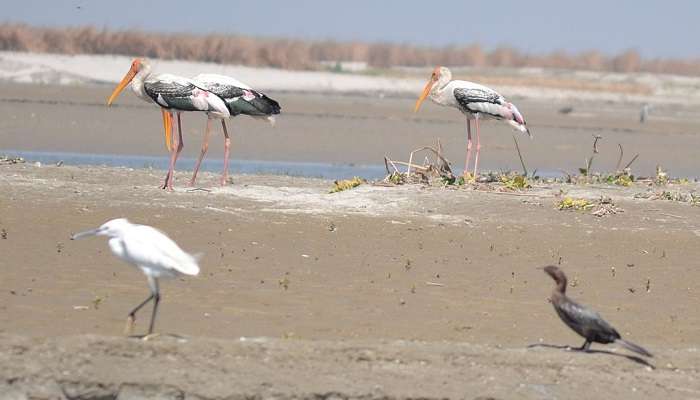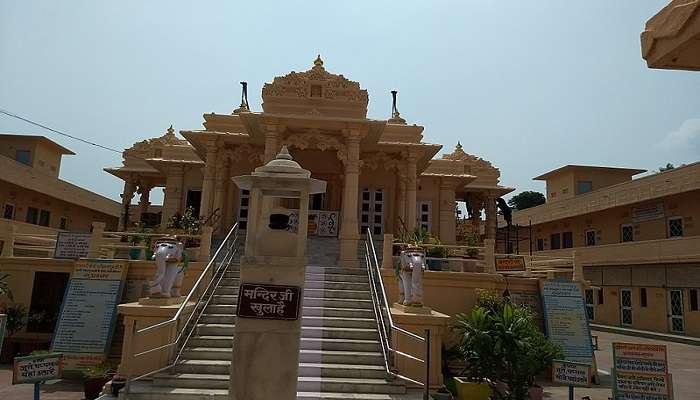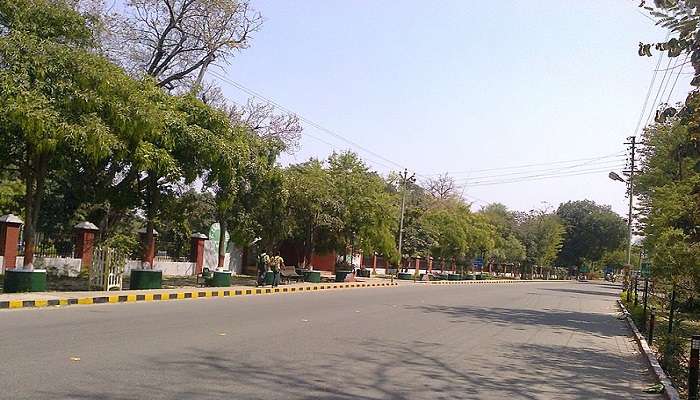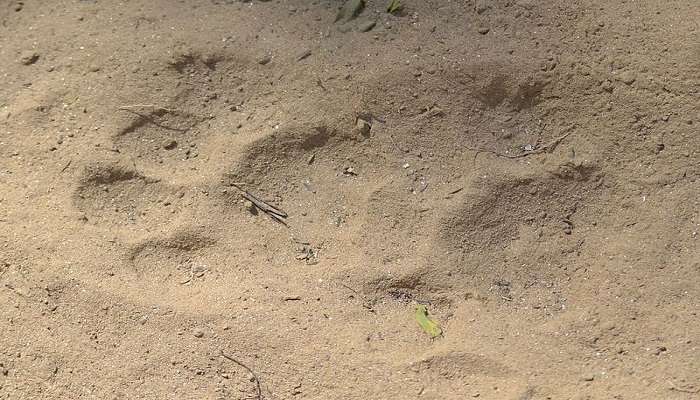Exciting Wildlife Monitoring At Hastinapur Wildlife Sanctuary To Embark In 2025

Nestled in the state of Uttar Pradesh, Hastinapur Wildlife Sanctuary is a testament to the region’s rich biodiversity and flora and fauna. The wildlife sanctuary is spread across 2073 square kilometres. This sanctuary is a perfect spot that depicts natural beauty and peace. Hastinapur Wildlife Sanctuary is just 96 km away from Delhi, making it feasible for tourists from nearby places. This sanctuary is home to a diverse variety of flora and fauna. There are species that one cannot spot so easily. Endangered species like the Indian Elephant, Bengal Tiger and Indian leopard can be spotted in this wildlife sanctuary.
Flora And Fauna Of Hastinapur Wildlife Sanctuary

This sanctuary encompasses diverse ecosystems ranging from ponds to wetlands and dense forests to grasslands. These ecosystems account for a variety of flora and fauna. There are over 1000 species of plants in this sanctuary. The entire place is covered with deciduous forest dominated by species like Sal, Teak and Sheesham. There are a plethora of medicinal plants, herbs, climbers and shrubs that are very much integral for maintaining balance in the local ecosystem.
Several endangered and charismatic species can be found in this sanctuary. The place is home to mostly mammalian species consisting of herbivores and predators. Predators like the Bengal Tiger and Indian Leopard roam in the forest. Herbivores like Indian Elephant, Sambar Deer and Spotted Deer are found grazing in the grasslands. Over 350 species of birds are identified in the Hastinapur Wildlife Sanctuary. Migratory birds flock to this place mostly during the winter. Bird species like the Indian Peafowl, Sarus Crane, Eagles, Owls and Waterfowls add to the sanctuary’s avian diversity.
Must Read: Sri Nageshwarnath Temple
Places To Visit Near Hastinapur Wildlife Sanctuary
These places around the wildlife sanctuary provide visitors with a diverse array of experiences. Some notable places to visit around the sanctuary are:
1. Hastinapur Jain Temples

There are both Shwetambar Jain Temples and Digamber Jain Temples in Hastinapur. The Shwetambar Jain Temples have been dedicated to Lord Shantinath and the Digamber Jain Temples have been dedicated to Lord Adinath. These Jain Temples are absolute architectural marvels. The place is an important pilgrimage site for devotees following Jainism. These temples reflect the history of the town being a critical Jain Pilgrimage Centre. The temple also serves as a repository of the Jain culture, teaching and preaching to future generations about the rituals of the religion. Remarkable craftsmanship is seen in these temples. The place is of utter spiritual purity.
Nearby Attractions: Bhai Dharam Singh Gurudwara, Karan temple etc
Best time to visit: October to March
2. Meerut

Meerut is just 40 km away from Hastinapur. This city is known for its extreme historical significance. This city is one of the oldest cities in India. The historical significance is also mentioned in the ancient texts and scriptures. This city has witnessed many battles, including the Indian Rebellion of 1857, which primarily began at Meerut but later spread to Northern India. The renowned St. John’s Church dates back to the British Era and has been preserved since then. Suraj Kund Park is a recreational park with lush green grounds, and boating is an activity for visitors.
Nearby Attractions: shahid samurai, Gandhi bagh etc
Best time to visit: October to February
Suggested Read: Lahesh Cave
3. Delhi

Delhi, being 100 km away from the sanctuary, is a perfect go-to spot. With an array of monuments to witness, this place is of immense historical significance. The place offers a wealth of historical landmarks, museums, markets and an array of experiences that will be worth it. The cuisine of Delhi is something that keeps your mouth watered all the time. The street food of Chandni Chowk leaves you with the impression that you’d revisit this place. The bustling markets and Chandni Chowk offer a sight, sound and taste feast. Its dynamic spirit makes it a captivating destination to explore.
Nearby Attractions: Akshardham, Humayun’s Tomb etc
Best time to visit: October to March
Weather And Things To Do

There is no particular entry fee for tourists to visit this sanctuary. The summer temperature is excessive and monsoons might be inaccessible due to muddy paths. The winter months of October to February are generally pleasant and cool. This is considered the ideal time for a visit when the weather is mild and migratory birds flock to the woods.
It is always essential to maintain a distance from the animals. Tourists should avoid any behaviour that provokes or harms wildlife. Bringing plastic and non-biodegradable items is prohibited. Make the most of your visit to this important sanctuary.
Suggested Read: Best Resorts Near Delhi
Local Cuisine Of Hastinapur

- Bedmi Puri With Aloo Sabzi: This popular breakfast dish consists of Poori made from urad dal served with spicy potato curry.
- Balushahi: Balushahi is a traditional North Indian Dessert that originated in Hastinapur. This flaky dish is made by deep-frying maida soaked in sugar syrup. Its texture is crispy on the outside but soft on the inside.
- Thandai: Cool Thandai is a classic beverage made with milk, almonds, saffron, spices, and chopped nuts. The locals use it to greet visitors.
- Kachori: Breakfast is served with Kachori either with Pudina Chutney or Sabzi. Either a tangy, aromatic, and delectably spiced potato curry or green coriander and pudina chutney are served with the crispy kachori, which is stuffed with a spicy lentil or potato mixture.
Further Read: Places To Visit In Uttar Pradesh
Hastinapur Wildlife Sanctuary plays an important role in the conservation efforts. The sanctuary is a protected place for endangered species. It promotes ecotourism which raises awareness about protecting several species of wildlife. The sanctuary ensures the continued survival of the flora and fauna by preserving the area. Wildlife preservation and community engagement are thoroughly fostered and ensured at this place. From an array of options to spot in the sanctuary to discovering amazing places in the vicinity, your trip to Uttar Pradesh and Hastinapur will just be worth it. Connect with nature’s wonder as this sanctuary promises an unforgettable experience.
For our editorial codes of conduct and copyright disclaimer, please click here.
Cover Image Credit: AK Gandhi for Wikimedia Commons
Frequently Asked Questions About Hastinapur Wildlife Sanctuary
What is Hastinapur Wildlife Sanctuary famous for?
Hastinapur Wildlife Sanctuary is home to the state animal namely swamp deer. Other species of deer such as Hog Deer, Cheetal and Sambar are also spotted. The state bird ‘Saras’ is also found. Several migratory birds come during the winter.
How to reach Hastinapur Wildlife Sanctuary?
Meerut Railway Station will be the nearest if you’re travelling by train as the sanctuary is located just at a distance of 30 km. By Road, tourists have to take the national highway that passes through the Hastinapur Sanctuary.
Which is the largest wildlife sanctuary in UP?
Hastinapur Wildlife Sanctuary is the largest wildlife sanctuary in Uttar Pradesh. Hastinapur Wildlife Sanctuary was established in the year 1986. Numerous animal species like swamp deer, elephants, and the Ganges River Dolphin are found in this sanctuary.
Which is the famous wildlife sanctuary?
Corbett National Park is the most famous wildlife sanctuary. This sanctuary was established in 1936. The main reason for the establishment was to safeguard the Bengal Tigers. This sanctuary was incredibly famous for nature enthusiasts as it is located in the lower regions of the Himalayas.
Which river is near Hastinapur?
Hastinapur as described in the Hindu texts such as Mahabharata and the Puranas is the capital of the Kuru Kingdom. This city has also been mentioned in the ancient texts of Jainism. It is located on the right bank of the river Ganga.
People Also Read:
Khaling Wildlife Sanctuary Karnataka Wildlife Sanctuary Sakteng Wildlife Sanctuary

Unveil the hidden treasures of the globe and turn every travel dream into reality. As a Content Writer, I am passionate enough to craft stories from ancient wonders to modern marvels. My words paint the picture-perfect itinerary for unforgettable experiences. Let my words be your trusted guide to immerse in the diverse culture and discover the beauty of the unknown.











